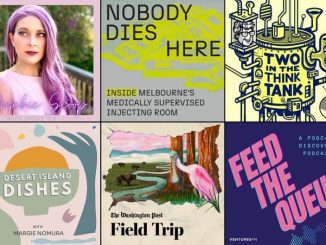More speakers have joined this year’s Radiodays Asia, the leading radio and podcasting conference in the Asia-Pacific, to be held 5-6 September in Kuala Lumpur, Malaysia.Jacqueline Bierhorst, Project Director Digital Radio Netherlands & Country Manager, Radioplayer NLJacqueline Bierhorst has been a pioneer in commercial radio since 1987, specialized in distribution, marketing and content. She has a strong track record in launching and leading successful commercial television and radio channels in The Netherlands and Belgium. From 2011 till 2015 she was project leader on the roll out of the DAB+ network in The Netherlands for all commercial broadcasters. Since 2015 she is project director Digital Radio NL, a collaboration between public and commercial broadcasters and the Ministry of Economic Affairs coordinating involvement of all stakeholders and joint marketing of Digital Radio in The Netherlands.Jacqueline is owner of Jacky B Entertainment Solutions, vice president of WorldDAB, a member of the WorldDAB Steering Board, chair of the WorldDAB Marketing Group and an active ambassador of digital radio throughout Europe. Jacqueline is also consultant of the Flemish Government, Department of Culture, Youth and Media on the introduction of DAB+ in Flanders, initiating collaboration throughout the Flemish stakeholders on digital radio and country manager Radioplayer Netherlands.Adam Bemma, DVB, ThailandAdam is a media trainer and advisor based in Chiang Mai, Thailand. He is also the English managing editor at Democratic Voice of Burma (DVB).
Darshini Kandasamy, CEO Trident Media, and Between The Lines, MalaysiaDarshini Kandasamy ran Between The Lines, an email newsletter service that curated, summarised and contextualised daily news in Malaysia. She has formerly worked at the globally renowned Malaysian news site, Malaysiakini, written for international publications such as CNN and Foreign Policy. She also co-founded the non-profit Malaysia Information Literacy Education (MILE) group and currently runs Trident Media, a boutique writing, editing and media consultancyRon Baetiong. Founder and CEO, Podcast Network AsiaRon Baetiong is an experienced start-up founder in the Philippines who has done the following: Founded Podcast Network Asia, the biggest Podcast Network in the Philippines that helps podcasters produce and monetize their shows using technology; hosts the #1 business podcast in the Philippines, and one of the top entrepreneurship podcasts in Asia – Hustleshare; created ChatbotPH, the first chatbot development agency in the Philippines and led the company to be acquired by the Sterling Paper Group in 12 months since conceptualization; conceptualized, designed, launched and scaled the biggest nightlife app in the Asia – Partyphile.Lisa Leong, ABC Radio and Podcast Presenter, AustraliaLisa is the popular presenter of live radio broadcast show “Sundays with Lisa Leong” on ABC Radio Melbourne and the expert interviewer host of This Working Life on ABC Radio National and ABC Podcast. She has co-authored with Mon Ross the award-winning book “This Working Life: how to navigate your career in uncertain times”. A former Intellectual Property, Technology and Wine lawyer (yes, there is such a thing!) Lisa caught the radio bug in Hospital Radio in London in 2001. After graduating from the radio program at the Australian Film Television and Radio School, Lisa did a stint presenting the Late Night Australian Music shows on commercial radio stations Hot Tomato on the Gold Coast and SA.FM in Adelaide, before joining the ABC presenting the breakfast show for the Eyre Peninsula in South Australia. Lisa is also an award-winning innovator and master facilitator, her unique approach has been the subject of Harvard Law case study and inspired her TEDxMelbourne talk “Can robots make us more human?”David Hua, Director of Audio and Language Content, SBSDavid Hua has over 20-years’experience in the media industry and is currently responsible for output in over 60 languages. He has held a number of senior executive roles at the Australian Broadcasting Corporation, and has been responsible for diverse portfolios across content, marketing, commercial, radio, and digital. Prior to coming to SBS, he led the ABC’s international services including Radio Australia, ABC Australia (TV), and digital services that connect audiences around the world with Australian stories. David did most of his tertiary education at the University of Technology, Sydney where he received his Honours and Masters degrees in media communications. Born in Vietnam, David has lived in regional New South Wales before moving to Sydney. He speaks Cantonese, Vietnamese and Mandarin.Radiodays Asia is a collaboration between Radiodays Europe, the world´s largest and leading conference for radio, audio and podcast, and broadcasting and podcast partners in Asia and Australia. The 2023 edition will run over two days in two tracks with 50 sessions. Top international speakers and industry leaders as well as successful producers and market experts will share their insights.Register for Radiodays Asia 2023 here. […]






